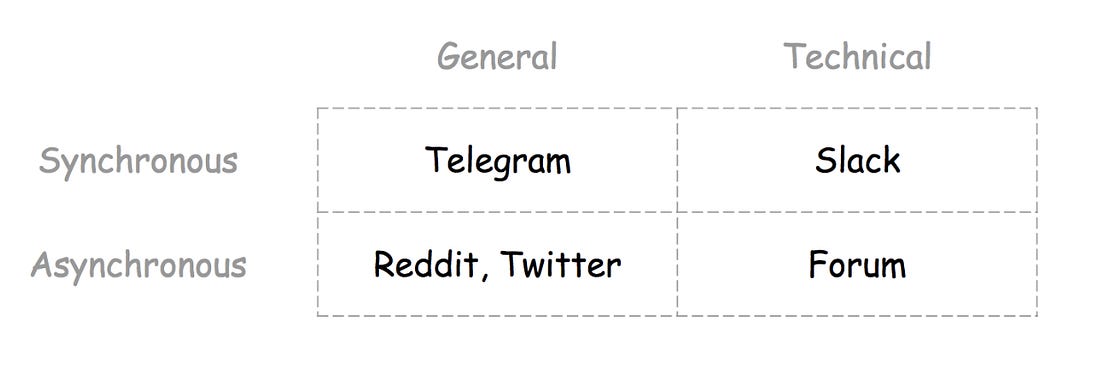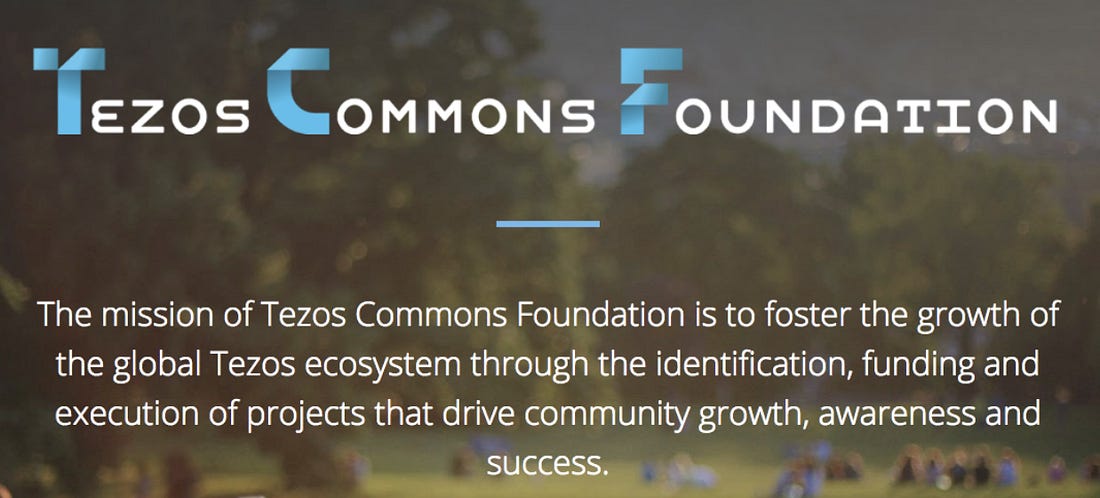The Playbook for Crypto Community Building
We are witnessing a Cambrian explosion in the number of blockchain projects coming online. Per CoinDesk, we’ve already seen more ICOs in 2018 than in the entirety of 2017, which is 9x the number that launched the year before that. Now put yourself in the shoes of one of the 1637 projects listed on CoinMarketCap — how are you going to differentiate yourself?
I’ve been thinking a lot about this question lately. Sure, executing on your development roadmap or devising a clever go-to market strategy can go a long way towards setting yourself apart from other cryptocurrencies. But there is another strategy that is worth focusing on too— building your community.

Your go-to-market strategy should include creating the most badass, passionate, and diverse community ever.
July 12, 2018The Playbook
Step #1— Maximize your initial token distribution
There is no better way to organically build a community than to put tokens in the hands of as many users as possible when your project launches. Your early tokenholders usually become your biggest evangelists because they stand to make the most money from your project succeeding. They will also stick with you during times of uncertainty, which can be extremely valuable.
Last year it was relatively easy to maximize your token distribution. Projects like Tezos conducted large public ICOs that sold their tokens to anyone who wanted to participate. But today, this method of broad token distribution is infeasible given the amount of regulatory scrutiny on the space. As a result, many projects have conducted exclusionary token sales (e.g. accredited investors only) in order to be compliant.
This shouldn’t mean we give up on broad token distribution altogether, and in fact, there are still clever ways to maximize reach. For example, Proof of Work coins can do a Fair Launch —this is when a coin launches on a date without any supply issued (i.e. no presale allocation or premine) and allows anyone to begin mining. It’s also possible to conduct a fair and compliant token sale that leverages the latest in Equity Crowdfunding laws, which is something we’ve seen platforms like Republic begin to offer. I suspect we’ll see more projects employ these techniques in the future.
Step #2—Codify your project’s mission and values
If you’re going to convince free agents to join your community, you need to be able to explain to them why your project matters. Projects should establish their core mission and values and then publish it somewhere.
If you’re looking for an example of this, check out this blog post by Will Warren on the 0x mission and values.
Step #3—Cultivate productive online discussion
Community members should have a place to voice their opinions online and feel like they’re contributing to your project. However, there isn’t a one-size-fits-all solution to online discussion because of two fundamental tensions:
Communication Style
Some people prefer Synchronous Communication (discussion that happens in real-time) while others prefer Asynchronous Communication (discussion that doesn’t happen in real-time).
Content
Some people prefer General Content (e.g. new partnerships or business development roadmap) while others prefer Technical Content (e.g. feature development or technical roadmap).
I’ve found the best projects tend to support multiple forums for discussion as opposed to trying to fit as many folks as possible into one chat or message board. One major benefit of this approach is that it allows technical discussion to occur unencumbered by distractions from casual users who sometimes just want to speculate on token price.
Here is an example of a discussion implementation that can meet the needs of a diverse crypto community:

General-Sync: NuCypher Telegram
General-Async: r/Bitcoin
Technical-Sync: Decred Slack
Technical-Async: Ethresearch
Projects should ensure that all discussions stay on topic and are respectful. The easiest way to do this is to find passionate community members who are willing to be moderators for free. If that is not possible, projects should consider hiring moderators because it is worth the investment. Finally, founders and core team members should partake in discussions too, as opposed to simply letting the moderators and community managers handle everything.
Step #4—Provide support
Your most important community members are the developers building on top of your protocol, so make sure they’re happy by troubleshooting their technical problems. While it’s possible for members of the core team to help out with this type of work when your project is just getting off the ground, at some point it’s probably worth hiring a full-time developer relations person.
You may also want to hire an employee to handle regular customer support. At first glance this role might not seem necessary, but it’s actually a secret weapon in terms of a generating goodwill in your community. If you’re looking for a good example of this, head over to the Decred Slack and check out the #Support channel — the team does a nice job of helping their non-technical users with problems such as setting up a wallet or learning how to join a staking pool.
Step #5 — Set up a grant program
If you have a treasury, consider setting up a grant program that pays tokens for 3rd-party development of your protocol. This a great way to grow your ecosystem while aligning your core team and community even further. One of my favorite examples of a well-executed and transparent grant program is the Zcash Foundation. Each quarter it funds proposals created by community members that support both the mission and values of the Zcash Foundation.
Step #6—Support community-run organizations
Community-run organizations, which are usually created spontaneously when token holders want to go above and beyond in their support for a project, can be an excellent way to further the your mission as well.
One well-run community organization is the Tezos Commons Foundation. The TCF has done well over the past few months supporting meet-ups all over the world and generating grassroots support for the project in way that is complementary to the efforts of the Tezos Foundation.
Step #7—Spread the word
Teams should constantly be spreading the word about their project in order to acquire new community members. There is no better example of this than Vitalik Buterin, who “basically lives on an airplane” and travels to hundreds of events each year evangelizing Ethereum.
For other projects, it’s never too early to hit the pavement and begin spreading the word about your protocol. I’ve been encouraged by one of our portfolio protocols, Kadena, which always seems to find good opportunities to spread the word about what they’re building and how people can get involved in the ecosystem if they’re interested.

"The same tools that secure an investment bank’s $100 billion order book will now be available to a musician selling her music online." Will Martino (@_wjmartino_) of @kadena_io Join us on the world's first decentralized video platform @officialrizeapp this Friday 7/13 2pm ET pic.twitter.com/T1Q2wIwCPg
July 11, 2018Step #8 — Have fun
Finally, have fun. A small window into your team’s personality can go a long way towards making community members even more passionate about your project. Here’s Karl Floersch from the Ethereum Foundation showing off his creative side with freestyle rap (and make sure you don’t miss Vitalik clapping at the end!).
Closing Thoughts
Ultimately, building an exceptional crypto community is just as important as your technical roadmap and go-to market strategy. With this playbook, projects can put themselves in a position to acquire and retain more community members, which will pay dividends in the long run.
----
Hit me up on Twitter if you have any feedback on today’s post!
This article was originally published on the Token Daily blog (link).
Author’s note: Thanks for being a Provably Neutral reader! I haven’t posted in a while and wanted to provide a quick update. Instead of posting daily, I’m going to be publishing long-form blog posts a bit less regularly.


